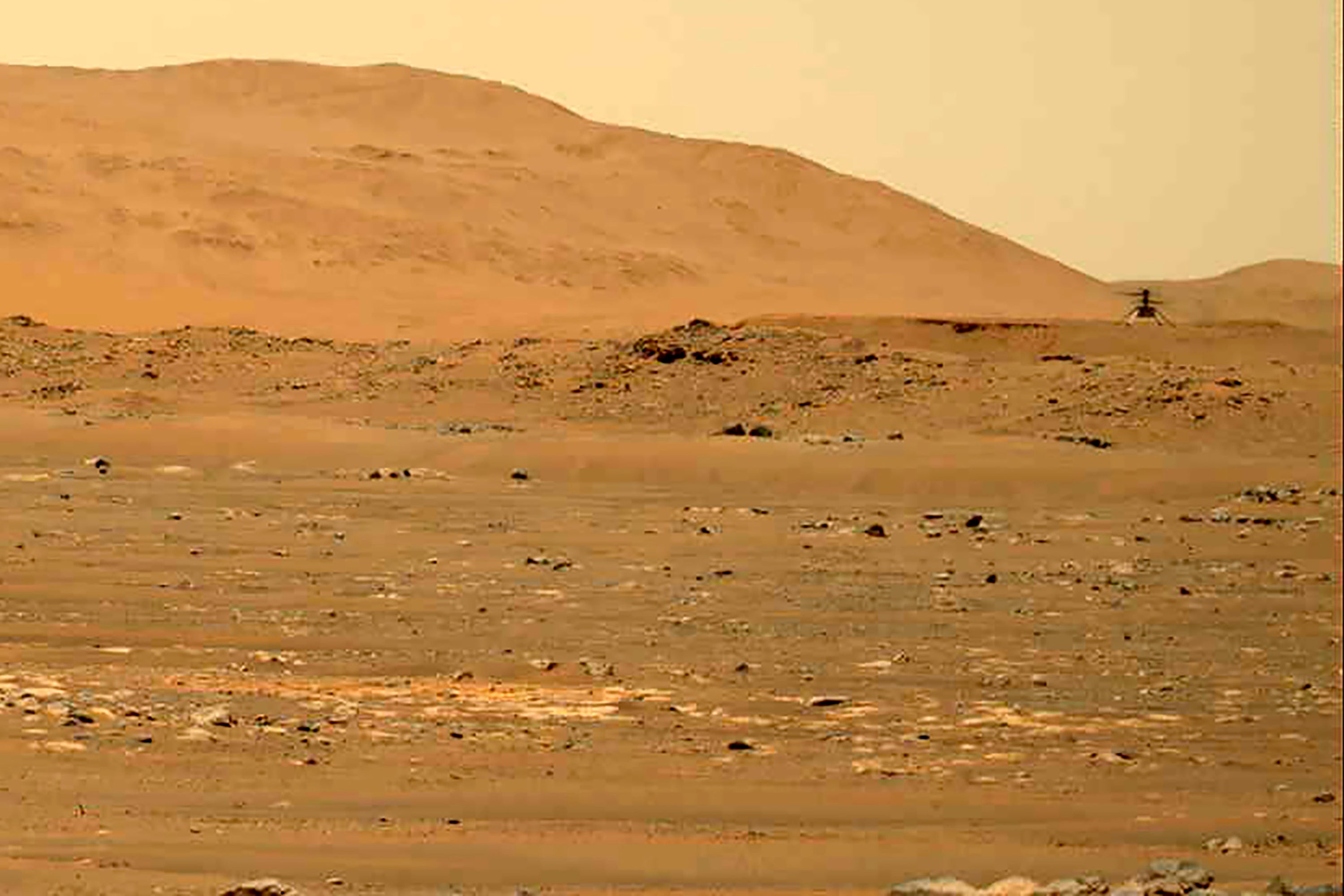Japan aims to bring back soil samples from Mars moon by 2029
Japan’s space agency plans to bring soil samples back from the Mars region ahead of the U.S. and Chinese missions now operating on Mars

Your support helps us to tell the story
From reproductive rights to climate change to Big Tech, The Independent is on the ground when the story is developing. Whether it's investigating the financials of Elon Musk's pro-Trump PAC or producing our latest documentary, 'The A Word', which shines a light on the American women fighting for reproductive rights, we know how important it is to parse out the facts from the messaging.
At such a critical moment in US history, we need reporters on the ground. Your donation allows us to keep sending journalists to speak to both sides of the story.
The Independent is trusted by Americans across the entire political spectrum. And unlike many other quality news outlets, we choose not to lock Americans out of our reporting and analysis with paywalls. We believe quality journalism should be available to everyone, paid for by those who can afford it.
Your support makes all the difference.Japan s space agency plans to bring soil samples back from the Mars region ahead of the U.S. and Chinese missions now operating on Mars, in hopes of finding clues to the planet's origin and traces of possible life.
The Japan Aerospace Exploration Agency, or JAXA, plans to launch an explorer in 2024 to land on the Martian moon Phobos to collect 10 grams (0.35 ounce) of soil and bring it back to Earth in 2029.
The rapid return trip would put Japan ahead of the United States and China in bringing back samples from the Martian region despite starting later, project manager Yasuhiro Kawakatsu said in an online news conference Thursday.
NASA's Perseverance rover is operating in a Mars crater where it is to collect 31 samples that are to be returned to Earth with help from the European Space Agency as early as 2031. China landed a spacecraft on Mars in May and plans to bring back samples around 2030.
JAXA scientists believe about 0.1% of the surface soil on Phobos came from Mars, and 10 grams could contain about 30 granules, depending on the consistency of the soil, Kawakatsu said.
Tomohiro Usui, professor at the Institute of Space and Astronautical Science, said soil on Phobos is likely to be a mixture of material from the moon itself and material from Mars that was spread by sandstorms. Collecting samples from multiple locations on Phobos could provide a greater chance of obtaining possible traces of life from Mars than obtaining soil from a single location on Mars, he said.
Any life forms that might have come from Mars will have died because of harsh solar and cosmic radiation on Phobos, JAXA scientists said. The NASA and the European Space Agency missions focus on potential life forms and evolution of the area of the Jezero crater, believed to be an ancient lake.
By studying Phobos soil samples including material from Mars, scientists hope to learn about the evolution of the Martian biosphere, Usui said.
He said Japanese research on Phobos and NASA’s samples from specific locations in the Martian crater can complement each other and could lead to answers to questions such as how Martian life, if present, emerged and evolved in time and place.
Last December, a JAXA probe, Hayabusa2, brought back more than 5 grams (0.19 ounce) of soil from the asteroid Ryugu, more than 300 million kilometers (190 million miles) from Earth, in the world’s first successful return of an asteroid sample.